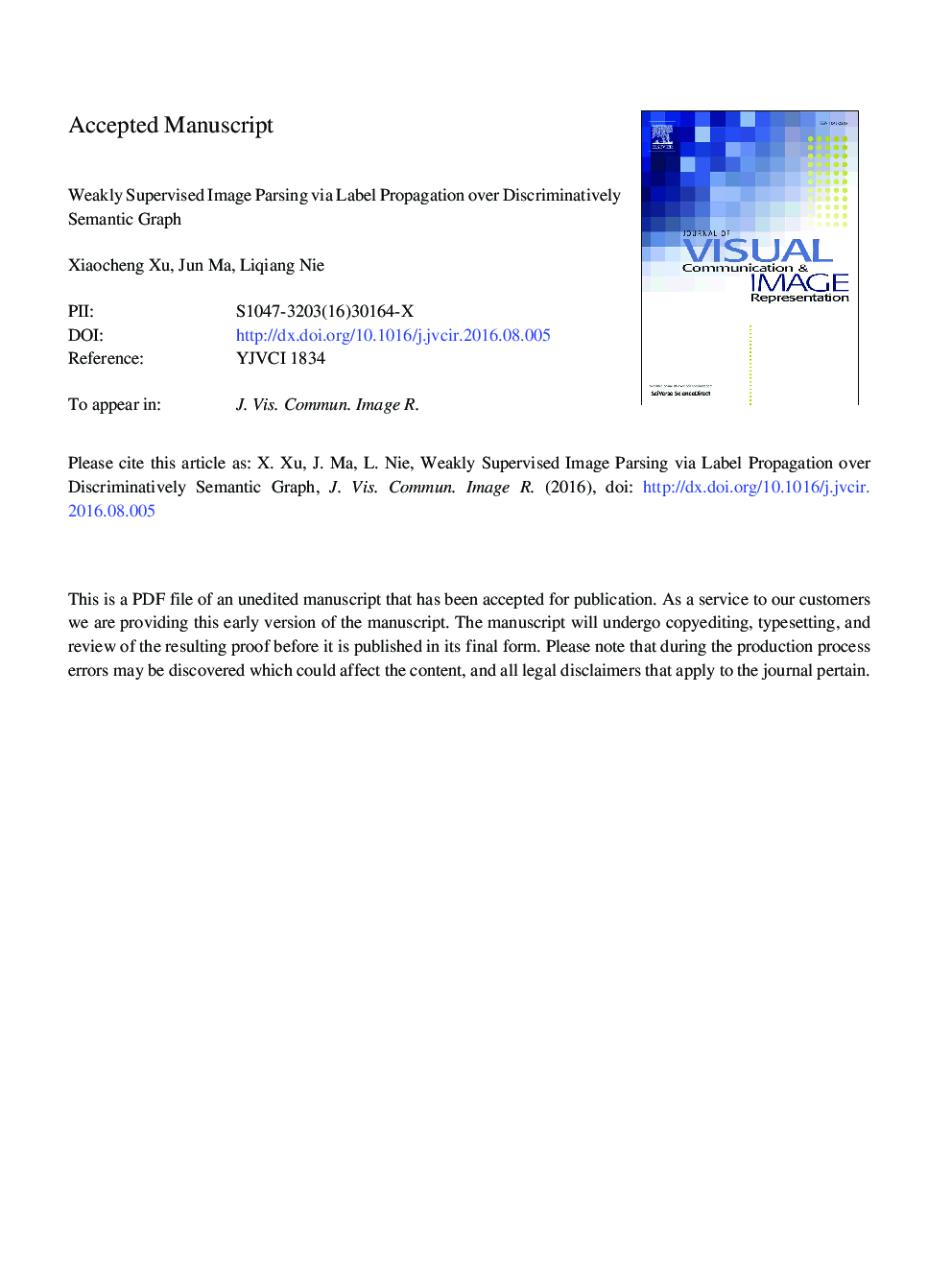| Article ID | Journal | Published Year | Pages | File Type |
|---|---|---|---|---|
| 6938514 | Journal of Visual Communication and Image Representation | 2016 | 28 Pages |
Abstract
In this paper, we concentrate on a challenging problem, i.e., weakly supervised image parsing, whereby only weak image-level labels are available in the dataset. In tradition, an affinity graph of superpixels is constructed to strengthen weak information by leveraging the neighbors from the perspective of image-level labels. Existing work constructs the affinity graph by purely utilizing the visual relevance, where the context homogenization is a common phenomenon and hinders the performance of label prediction. To overcome the context homogenization problem, we not only consider the visual and semantic relevance but also the semantic distinction between every target superpixel and its neighbor superpixels in the affinity graph construction. We propose a novel way in constructing the inter-image contextual graph, and design a label propagation framework jointly combining visual relevance, semantic relevance and discriminative ability. Extensive experiments on real-world datasets demonstrate that our approach obtains significant gains.
Related Topics
Physical Sciences and Engineering
Computer Science
Computer Vision and Pattern Recognition
Authors
Xiaocheng Xu, Jun Ma, Liqiang Nie,
